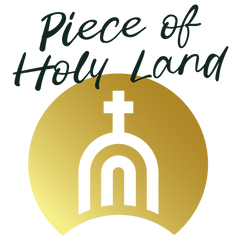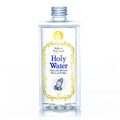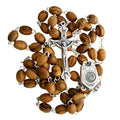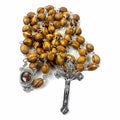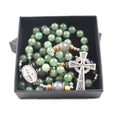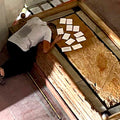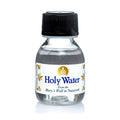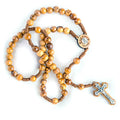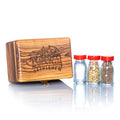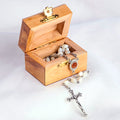Mary Magdalene | Disciple, Witness & Faithful Follower
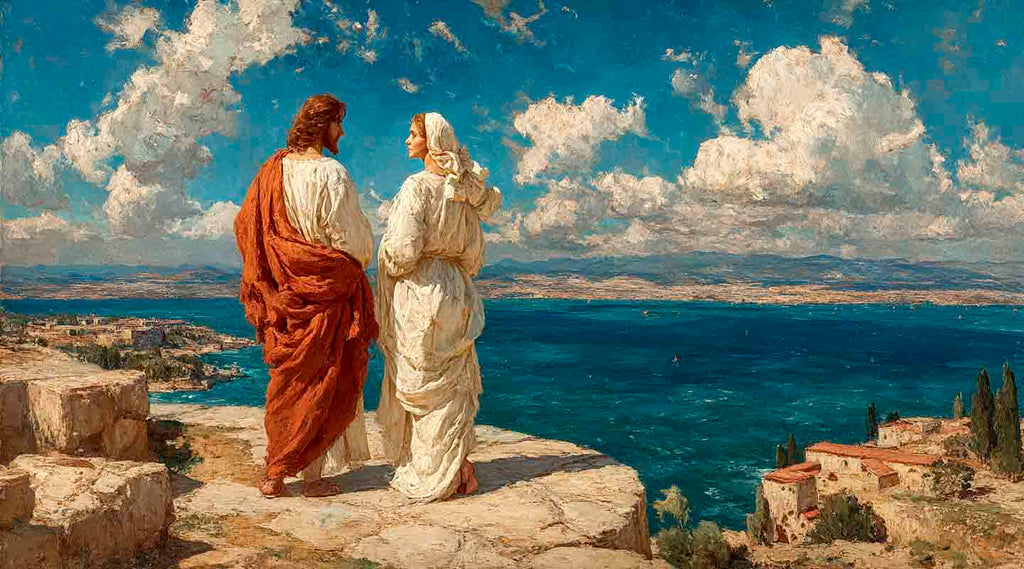
Exploring Mary’s Journey from Magdala to the Cross & Empty Tomb
Mary of Magdala – Setting the Scene
Magdala was a busy first‑century fishing port on the western shore of the Sea of Galilee. Traders salted fish and shipped them to far‑off markets while farmers and artisans built homes along paved streets. Josephus described the town as having thousands of residents and hundreds of boats, making it a hub of commerce in Galilee. It is from this bustling port that Mary, called Magdalene, most likely came. The Gospels distinguish her from other women named Mary by her hometown, and her story begins when Jesus healed her of “seven demons.” Her deliverance on the shores of the Sea of Galilee marked a profound turning point and drew her into a life of discipleship.
Magdala

Magdala’s archaeological remains underscore the town’s significance. Excavations have uncovered a synagogue dating from Jesus’ time, complete with carved benches, frescoes and mosaics. A uniquely carved stone depicting a seven‑branched menorah hints that artisans at Magdala had seen the Temple in Jerusalem. Another smaller synagogue and numerous ritual baths testify to a thriving Jewish community that would have welcomed itinerant teachers like Jesus. Today the modern Duc in Altum church stands beside the ancient port, with an altar shaped like a fishing boat and chapels honouring women of the Bible. Visiting Magdala links pilgrims to Mary’s roots, the Sea of Galilee’s vibrant past and the daily lives of those who first heard Jesus preach. You can read more about the site in our blog on Magdala, Mount Tabor & Arbel.
Magdala stone

Liberation and Discipleship
Luke’s Gospel records that Jesus healed “Mary, called Magdalene, from whom seven demons had gone out” (Luke 8:2–3). Delivered from torment, she and other women, Joanna, Susanna and many others, travelled with Jesus and the Twelve. They provided for the ministry out of their resources, suggesting that Mary Magdalene was relatively wealthy and that women played a vital role in supporting Jesus’ mission. Her deliverance was not only physical but spiritual; freed from oppression, she responded with unwavering devotion. Mary follows Jesus throughout His ministry, from the hills of Galilee to the roads of Judea, demonstrating that redemption naturally leads to service.

The Sea of Galilee remained central to Mary’s journey. From the calling of fishermen on its shores to the feeding of multitudes and the calming of storms, the lake was the stage for many of Jesus’ miracles. Mary Magdalene’s freedom in Galilee mirrors the liberation offered to others, such as the demoniac at Kursi or the woman healed of bleeding, showing that Christ’s compassion knows no bounds. As you reflect on Mary Magdalene's transformation, consider how Jordan River Holy Water and an Olive Wood Cross can serve as tangible reminders of baptism and deliverance in your own life.
Witness to the Crucifixion & Resurrection
When Jesus was arrested and His male disciples fled, Mary Magdalene remained near. All four Gospels name her among the women who watched the crucifixion from a distance. She stood by the cross with Mary the mother of Jesus and others, witnessing the suffering of the One who had restored her. After the body was taken down, she followed to see where Joseph of Arimathea and Nicodemus laid Him, preparing to anoint Him after the Sabbath. Her fidelity in sorrow underscores her deep love and courage.

On the first day of the week Mary went to the tomb while it was still dark. According to John’s Gospel she found the stone rolled away and ran to tell Peter and the beloved disciple that the Lord had been taken. After they left, she remained weeping outside the tomb. Two angels appeared and asked why she was crying, and then Jesus Himself stood near. At first she did not recognise Him, mistaking Him for the gardener, but when He called her by name she cried out, “Rabboni!” (Teacher). Jesus instructed her, “Do not cling to Me, for I have not yet ascended to the Father; but go to My brethren and say to them, ‘I am ascending to My Father and your Father’.” Thus Mary became the first witness of the Resurrection and the messenger to the apostles. For this she is honoured in many traditions as the “Apostle to the Apostles.”
Mary’s encounter with the risen Christ invites believers to recognise Jesus in unexpected moments and to share the good news boldly. Carrying a Comfort Cross or a Holy Water Rosary during prayer can help us meditate on her joy and witness.
Mary Magdalene in Tradition & Misconceptions
Over the centuries Mary Magdalene’s identity became tangled with other women in the Gospels. In a 591 homily Pope Gregory the Great suggested that the unnamed “sinful woman” who anointed Jesus’ feet (Luke 7:36–50) and Mary of Bethany were the same person as Mary Magdalene. This conflation led Western Christians to regard Mary Magdalene as a repentant prostitute, a portrayal not supported by the biblical texts. The Eastern churches, however, continued to venerate her simply as a disciple and myrrhbearer, equal to the apostles. In recent decades scholars and the Catholic Church have distinguished between these figures, emphasising Mary’s role as a devoted follower rather than a fallen woman. Remembering Mary accurately honours her testimony and respects the dignity of all women.
Legends about Mary also grew. Medieval tales spoke of her wealth, beauty and journeys to southern France; modern novels and films have speculated about her being Jesus’ wife. While such stories capture popular imagination, they distract from the core message: that a woman from Galilee experienced Jesus’ healing power, followed Him faithfully and announced His resurrection. By focusing on her true story, Christians are drawn into deeper gratitude for grace and called to similar fidelity.
Pilgrimage to Magdala & the Sea of Galilee
Magdala sits between Tiberias and Capernaum along the Sea of Galilee’s western shore. Pilgrims visiting today can walk through the excavated streets, stand in the first‑century synagogue where Jesus may have preached and spend time in the Duc in Altum church. Nearby, the Jesus Trail connects Magdala with Nazareth, Cana, Mount Tabor, Capernaum and Mount Arbel. Climbing Mount Arbel offers panoramic views of the Sea of Galilee and a chance to reflect on the resilience of Mary and the first disciples. Travellers often continue to Nazareth, Capernaum, Mount of Beatitudes & Tabgha and Magdala, Tabor & Arbel. Each site deepens appreciation for Mary’s world and the context of Jesus’ ministry.
Modern pilgrims also visit churches dedicated to Mary Magdalene, such as the golden‑domed Russian Orthodox church on the Mount of Olives and the Duc-in-altum in Magdala, where her relics are venerated. These shrines reflect her importance across Christian traditions. Yet perhaps the most meaningful way to honour Mary is by following her example of loving service, generous support for the Church and unwavering faith.
Reflection & Spiritual Lessons
Mary Magdalene teaches that no one is beyond the reach of grace. Freed from bondage, she chose to follow Jesus with her whole life. Her presence at the cross shows the courage to stand with the suffering, even when others flee. Her encounter with the risen Christ reveals that love recognises the voice of the Good Shepherd and responds with joyful proclamation. In her we see the power of redemption to transform shame into dignity, fear into witness, and sorrow into hope.
As you meditate on Mary’s journey, consider incorporating tangible reminders into your own prayer life. Holding an Olive Wood Cross during meditation or blessing your home with Jordan River Holy Water can anchor your prayers in the same land where Mary walked. Wearing or praying with a Holy Water Rosary connects you to the holy sites of Galilee and invites Mary’s intercession. These items not only support Christian artisans in Israel but also deepen your connection to the Gospel story.
Frequently Asked Questions about Mary Magdalene
Q: Who was Mary Magdalene in the Bible?
Mary Magdalene was a woman from Magdala on the Sea of Galilee. Jesus healed her of seven demons and she became a devoted follower. She supported His ministry and is named among the women who provided for Him.
Q: How many demons were cast out of Mary Magdalene?
The Gospels record that Jesus freed Mary Magdalene from seven demons. This deliverance is mentioned in Luke 8 and echoed in Mark 16. Her healing set the stage for her faithful discipleship.
Q: Why is Mary Magdalene called the “Apostle to the Apostles”?
After Jesus’ resurrection, Mary encountered the risen Christ outside the tomb. He sent her to tell the apostles that He had risen. Because she announced the good news to them, she is honoured as the apostle to the apostles.
Q: Was Mary Magdalene a prostitute?
No. The idea that she was a repentant prostitute arose in the sixth century when Pope Gregory the Great conflated Mary Magdalene with an unnamed “sinful woman” and Mary of Bethany. Scripture does not label her as a prostitute, and the Eastern Church has always venerated her simply as a disciple.
Q: Where is Magdala and can I visit it today?
Magdala is on the western shore of the Sea of Galilee, between Tiberias and Capernaum. Excavations have uncovered synagogues, ritual baths and markets from the time of Jesus. You can visit the archaeological park and the Duc in Altum church, and connect your trip with our blog about Magdala, Tabor & Arbel.
Q: How can I remember Mary Magdalene in my prayer life?
Using a Holy Water Rosary or carrying a Comfort Cross can help you reflect on Mary’s faithfulness. Reading the resurrection accounts in the Gospels and praying with her at the tomb deepens spiritual connection.
Q: What is the significance of Mary at the Resurrection?
Mary was the first to see the empty tomb and the first to encounter the risen Jesus. Her proclamation, “I have seen the Lord,” is the earliest testimony to the Resurrection. Her witness affirms that God entrusts the Gospel to the humble and faithful.
Q: What products honour Mary Magdalene and the Holy Land?
Popular items include Jordan River Holy Water, handcrafted Olive Wood Cross, Comfort Cross and Holy Water Rosary. These keepsakes connect you to Mary’s homeland and support Christian artisans.
SHARE:

